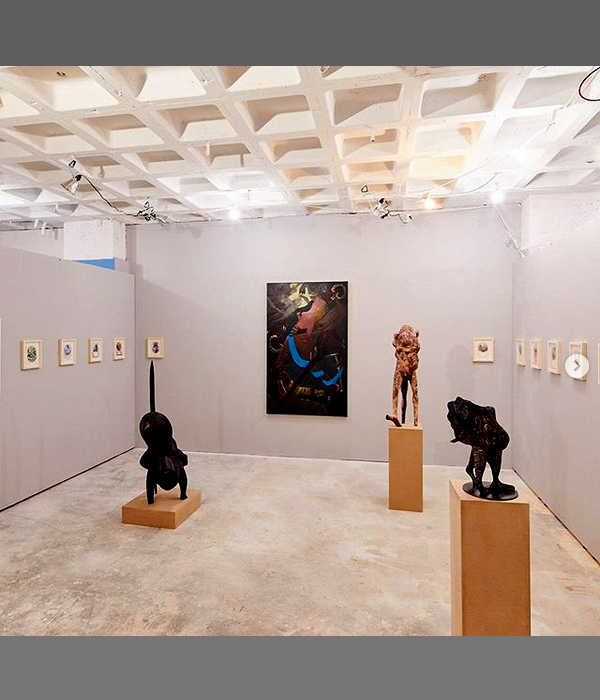Court of the Dryad
SPRING/BREAK Art Show
866 UN Plaza, NYC
Max Razdow
Aaron Spangler
Kyle Staver
Deep in the woodlands, the Dryads have no temple. Lamented as lost, or as weightless lyricism, they are slow to go, unwinged and hiding from titanium sunlight. These wood-nymphs are unanchored and wild, unnoticed and immaculate as beads of dew. What transpires when the night comes? They go and find their secret way, by taking their seats in the Court of the Dryad.
For the tree is their worship, these powerful small things of lesser nature; they love only that which can sustain them, and the tree is that which they honor alone. Rings and rings of them come dancing beneath the branches which dip to the earth to greet them. We pine to see them, but it is their kingdom. It is not ours. They are the small voices of the leaves and roots, and they sing from time to time, wrapping tree limbs around themselves to form a new interior.
The wood sculptures of Aaron Spangler maintain the arboreal and are personified with voluminous raillery, manifesting figural presence as it rises along the crest of the uncanny. Spangler’s three-legged beings are branded with glyphic forms mysterious and unreal. In speaking through touch, they become companions incised with languages, speaking unknown declarations from days of greater humility, when the Court gave us a seat.
In the paintings of Kyle Staver, mythic scenarios help guide us to the Dryad’s embrace. Finding the edge of fairyland is implacable without a guide, and yet we must go in solitude. In following the will o’ the wisp through the thickening ferns, we find ourselves at last in the glade of the Dryad, as Staver depicts the goddess’s glance and allows her only communion.
The court is peopled too by the quasi articulated denizens of the leaf-littered floor. In Max Razdow’s drawings, the observers and pageant participants of the Dryad’s court arrive. They carry banners to the lesser deities of nature, of gnarled branches and sea trench and vine, demigoddesses and godlings that gauge our crossings. Razdow attempts to apprehend these creatures, hoping it is in their favor that he annotates their marginalia, as an embrace of leaf and frond.
